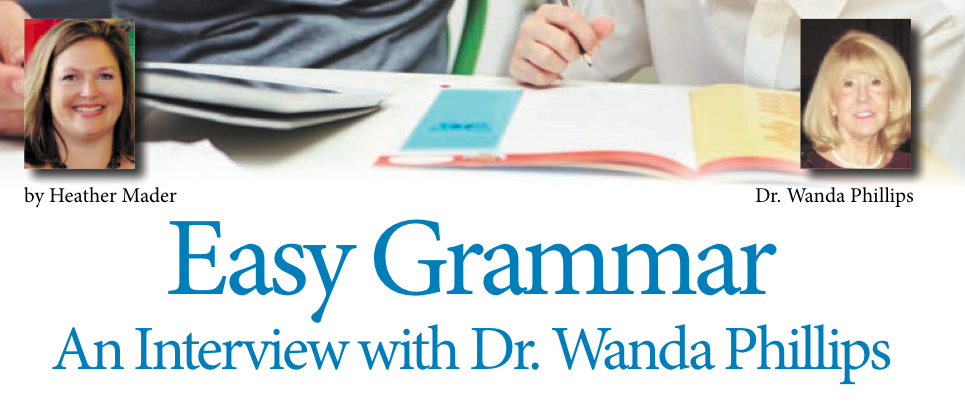
Easy Grammar: An Interview With Dr. Wanda Phillips
Most think of grammar only in terms of parts of speech. It, actually, has four components: syntax, orthography, etymology, and prosody. Syntax deals with sentence structures and parts of speech. Orthography addresses sounds, syllables, and words. Etymology deals with classification, derivation and modification of words. Prosody addresses rules for verses. Who knew that analyzing poetry in literature or writing poetry is categorized within grammar?
Parents, typically, ask when, why, and how they should teach grammar. The appropriate time for instruction and the rationale for teaching it are interrelated. You may be surprised to learn that you began teaching grammar when you first spoke to your infants. Growing into toddlers, children assimilated your language usage. Their brain synapses were busy “sparking” to embed learning. As they learned, your usage—correct or incorrect—became theirs. Plus, that usage became so engrained that it sounded right to them and to you. We teach grammar to provide tools for speaking well and for understanding how our language works.
This leads to the question of how grammar should be taught. Educators disagree. Some teach it within the context of writing; other prefer a formal approach with specific lessons. The latter are frequently proponents of Dr. Maxwell Maltz’s learning theory that credits cyclical learning for ensuring mastery understanding. Parents, obviously, choose the curriculum that reflects their beliefs.
Regardless of your choice of a formal or mini-lesson approach, parents want assurance thattheir present usage is correct. Easy Grammar’s Guide for Parents: Improve Your Grammar in Minutes will help you determine this in minutes—in the privacy of your home. After assessing your usage, Dr. Phillips guides you in completing only lessons that you need. Easy explanations and strategies for memorable learning help readers to change their vernacular. Parents improve their usage, and children learn, too!